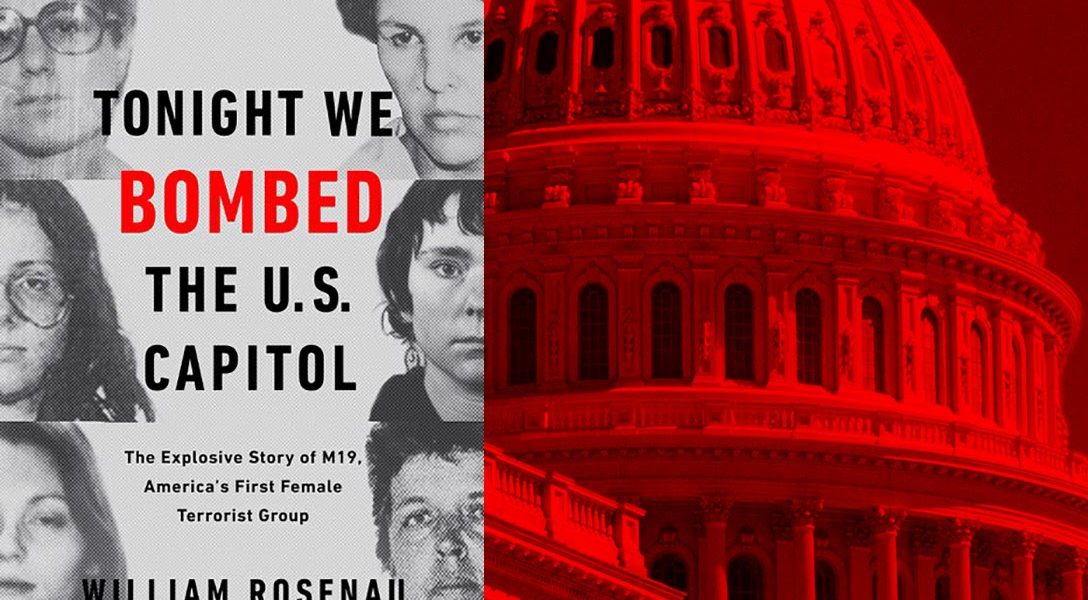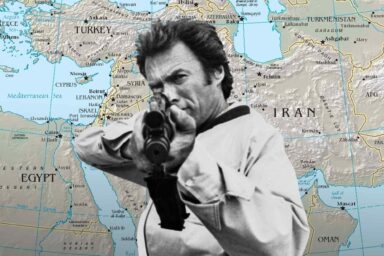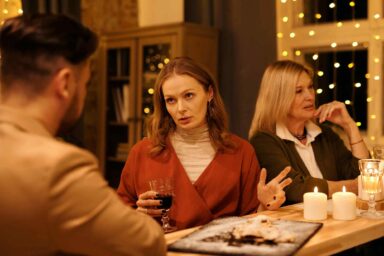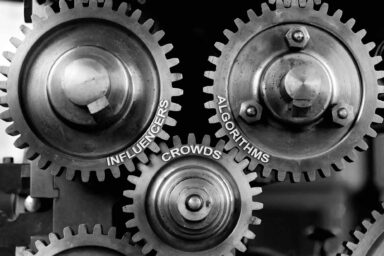A deep dive into the violence and terrorism of the 1970s and ‘80s and the bombing of the US Capitol.
You may think that today’s political and cultural divide today is wide, but it’s nothing compared to the ‘70s and early ‘80s.
Imagine what the country would be like today if almost every day there were bombings by domestic terrorists? If there were attacks that assassinated police at point-blank range, and groups like the Black Liberation Army took credit?
Imagine that Marxist-Leninist revolutionaries were discovered to have an arsenal with thousands of military weapons along with FBI and DEA identification cards. Imagine a series of bombings set off in the Officers Club of the Washington Navy Yard, the South African consulate, and the New York City Police Benevolent Association.
All of this actually happened — and at the time there was not even a major sense of panic about it. It was business as usual. It makes Sen. Bernie Sanders (I-VT) and his “revolution” look like child’s play.
In this week’s WhoWhatWhy podcast, William Rosenau — senior policy historian at CNA, former senior research scientist at the RAND Corporation, former counterterrorism expert at the State Department, and author of Tonight We Bombed the U.S. Capitol — traces this period, with a special look at the May 19th Communist Organization (M19): a group of women who banded together to oppose US government policies and ultimately blew up part of the US Capitol in November 1983.



Click HERE to Download Mp3
Full Text Transcript:
As a service to our readers, we provide transcripts with our podcasts. We try to ensure that these transcripts do not include errors. However, due to time constraints, we are not always able to proofread them as closely as we would like. Should you spot any errors, we’d be grateful if you would notify us.
| Jeff Schechtman: | Welcome to the WhoWhatWhy podcast. I’m your host Jeff Schechtman.
We look at our political and cultural divide today and think that it can’t get much worse. What we forget is that it has been worse, not just when policy matters were settled by a duel or literally pitted brother against brother, but even in the 1960s and 1970s students were shot at, at Kent state. Law enforcement was murdered in politically motivated robberies, and even the bombing of the US Capitol was part of our contemporary political history and division. |
| Jeff Schechtman: | A powerful example of this is a group of left wing women fresh from their time in the Weather Underground who got together in the early 1980s and the first blush of the Reagan years to become essentially domestic terrorists bent on opposing the political, corporate, and government ideologies of the time. My guest, William Rosenau, takes us back to that time in his recent book Tonight We Bombed the U.S. Capitol. William Rosenau is a senior research scientist at CNA, a nonprofit research and analysis organization and a fellow in International Security at New America. It is my pleasure to welcome William Rosenau here to talk about America’s first female terrorist group and a really violent time in the US. William Rosenau, Thanks so much for joining us. |
| William Rosenau: | Jeff, thanks very much. It’s great being here. |
| Jeff Schechtman: | One of the things that one has to understand, I think first about this story is the context of the time, the amount of violence that was going on at the time, the bombings that were taking place, things that if any one of them happened today, it would be an international incident. |
| William Rosenau: | Absolutely. In fact, I was watching a Frontline two- parter on the political divide in the United States, the election of Trump, and there was this endless discussion by these various talking heads and journalists about how today America has never been more divided, which to me is absolutely laughable. I mean, you can talk about the 1850s in the run up to the Civil War, things were quite a bit more divided. You can talk about the 1960s and into the 1970s where you said, I mean, there was an incredible level of political violence. In the early 1970s there were literally hundreds and hundreds of bombings in the United States a year. So yes, we have our divisions today, certainly, but I don’t think anything comparable to what was going on in these earlier periods in American history. |
| Jeff Schechtman: | There were the bombings that we’re talking about, but also political assassination, police officers, law enforcement being shot at and killed, robberies that were taking place that killed law enforcement. I mean, it was a really violent period. |
| William Rosenau: | Absolutely. In fact, one of the groups that I talk about in my book, The Black Liberation Army, which was an outgrowth of the Black Panther party, they made it their mission to assassinate cops, mostly in New York, but also in the Bay Area, in other parts of the country. They would literally go up to policemen sitting in their cars and shoot them in the head or lure them into housing projects and assassinate them. It’s absolutely remarkable, and as you said, if that happened today, I mean it would be almost unimaginable and hopefully we’re not going to see that again, but okay. That’s very, very different from Antifa or people breaking windows and at demonstrations that we see today. |
| Jeff Schechtman: | What was the psychological impact of all of this? Because it really goes to the very heart of whether or not this was terrorism at the time, because terrorism, it seems, has a very specific goal in terms of its fear factor and psychological impact. There was so much violence at the time. One wonders if it was even terrorism, if it might be called something else. |
| William Rosenau: | I mean, terrorism specialists, there’s a cottage industry of coming up with definitions of terrorism and according to one estimate by a scholar named Alex Schmidt, there’s something like 125 different definitions of terrorism in the academic literature, and every sort of scholarly or sort of policy oriented study about terrorism usually begins with the question of definitions. What is terrorism? So it’s an elusive concept. It’s a contested concept, but there are plenty of contested concepts. I mean, what’s democracy? What’s pornography? But for me, in essence, terrorism is the purposeful use of violence or the threat of violence to further political, social, ideological agendas, intended to provoke fear and anxiety among a wider population and to really try to cause that population to doubt the ability of the state to protect people. |
| William Rosenau: | So it’s really the psychological dimension, as you said, some logical dimension of terrorism is absolutely paramount. It’s not the individual act, which in most cases, I mean 9/11 aside or the Oklahoma City bombing, aren’t that incredibly destructive. But it’s the knock-on effect. It’s the fear, it’s the popular fear, it’s the anxiety that terrorists seek to provoke, and some are able to do it. |
| Jeff Schechtman: | It’s interesting that so many of these groups and M19, the May 19th group of women that you talk about in Tonight We Bombed the U.S. Capitol, had a kind of social justice basis for whatever it was that they were doing. |
| William Rosenau: | Yeah, I guess you could call it social justice. I mean, almost all of them had been activists in the 1960s. Most of them had been involved with Students for a Democratic Society and then later the Weather Underground, which broke up in the mid-70s and in some ways May 19th is, I think, continuation of the Weather Underground. I would say these people were pretty committed Marxist Leninists and anti-imperialist. So social justice was part of it. I mean, they were certainly supporters of gay liberation, human rights, stuff like that, kind of more social justice things, but they also had a pretty well defined, well, it’s actually pretty opaque if you try to take it apart. But they were quite ideological and part of this global struggle against imperialism in a supporting role. |
| William Rosenau: | So in their view, their job was to promote and assist revolutionary forces in Central America, in the Middle East, in Southern Africa and within the United States, black and brown people who in their view were being colonized on Indian reservations, on ghettos and in Puerto Rico. So they saw themselves as part of this kind of epic worldwide struggle. They called themselves North American anti-imperialists. They saw themselves as being in the belly of the beast. So they were inside the United States so they had a particular obligation to take actions that they thought would help derail this worldwide American imperialism. |
| Jeff Schechtman: | Specifically, who were these women? You say that they were originally part of the Weather Underground. It was kind of a spinoff from the Weather Underground. Talk about who they were and what some of their backgrounds were. |
| William Rosenau: | Yeah. Their backgrounds, their stories, I found just so compelling and so interesting. Most had been in SDS or the Weather Underground or both. They were all basically from middle class backgrounds. They were very intellectual, very well educated at places like Radcliffe, Barnard, Cornell, University of Texas, Berkeley. Came from very stable, loving homes. The idea that somehow, and I guess a lot of people understandably had this idea, that terrorists are somehow deranged or they’re the product of some hideous upbringing just isn’t true. It isn’t true across the board, it certainly isn’t true with respect to May 19th. So to take one example, Marilyn Buck, a very important member of the May 19th inner circle. She was from Austin, Texas. Her father was a veterinarian turned Episcopal priest. She went to St. Stephen’s Episcopal School, a private school in Austin, had a classic upper middle class early 1960s upbringing, not incredible privilege but a very comfortable life. |
| William Rosenau: | She, over the course of several years, became radicalized, very involved with SDS, wound up in the Bay Area, Berkeley. Specifically, she was described as the only white member of the Black Liberation Army. She’s very intelligent, disciplined, I’d say professional, revolutionary. Her job was to support the men in the BLA. Her big job was as an armer, was buying weapons for these guys and buying ammunition. It was a lot easier for a nice, attractive southern gal from Texas to move around without drawing a lot of attention, a lot easier for her than it was for the BLA guys who were pretty hardcore ex-Panthers. But she made a mistake, and she bought a thousand rounds to go from different states outside of California, went to Arizona, went elsewhere. |
| William Rosenau: | She bought a thousand rounds of ammunition with a fake ID, and that was a federal offense. She got sentenced in 1973, 10 years to a woman’s federal prison in West Virginia, and in 1977 she got a furlough. Those were more innocent times, I guess, federal prisoners, I doubt they get furloughs nowadays. She went to visit her parents. She came back, and then she got another furlough to visit her lawyer in New York. So in 1977 she goes off, and she doesn’t return from her furlough, and she was at large for the next eight years. So it was these kinds of stories that the biographies, the life trajectories of the women and the one or two men who were in the inner circle, those were the things that really drew me in. I mean, just absolutely fascinating. I hope some of your listeners would agree with it. |
| Jeff Schechtman: | And talk about Judy Clark, who was another one of these fascinating characters. |
| William Rosenau: | Oh, absolutely. For me, maybe the most interesting of all. So Judy, she was a classic what was known as a red diaper baby. She grew up in New York. Her parents were both high level functionaries in the Communist Party USA. Then one day in the early 1950s the father makes an announcement to the family, to little Judy and her mother and brother. We’re moving to Moscow, where he’d been appointed the correspondent for the Daily Worker, the Communist Party USA’s daily newspaper. So the family in the early 1950s, I think Stalin was actually dead at that point, moved off to Moscow. Judy was quite young at this point. Her parents were starting to get disillusioned with communism. They’d seen the yellow eyed, pockmark face of Stalinism up close. After they returned to the United States, the parents gradually over time moved away from the party and actually left the party. |
| William Rosenau: | They left the party, but Judy was bitter about their decision. She loved the party. She loved the warm embrace. I mean, the communist party at the time, they had summer camps, they had schools, they had musical events. She loved the warm embrace of the party and became just very antagonistic toward her parents. Interestingly, her father, who remained a man of the left, he was involved with Dissent magazine. Anyway, he remained a democratic socialist. |
| William Rosenau: | In 1969 she was part of a protest, they took over an administration building. The president of the University of Chicago, Edward Levy, who went on to become attorney general under Gerald Ford, kicked her out. So Judy’s father went to Irving Howe, his colleague at Dissent magazine, and the great literary critic. Irving Howe, who was very close to Saul Bellow. So Saul Bellow goes to Levy and says, “Can you give her a break? Can’t you let her back in?” Levy says, and this is direct quotation, “No, she’s a bad one.” So Judy was out. |
| William Rosenau: | Fast forward to 1981. Judy is involved in the notorious, Brinks robbery in upstate New York, October 20th, 1981. She winds up with three consecutive 25-year to life sentences for second degree murder. She’s locked up at the Bedford Hills prison in Westchester. About 2016, there she is in Bedford Hills, and she’s told one afternoon, oh, you have a visitor coming. Whole entourage shows up and who appears but the governor of New York, Andrew Cuomo, and he sits down with her and spends an hour with her and decides after spending an hour with her that he’s going to commute her sentence and commutation basically meant that she was going to be eligible possibly for parole. So she went up for parole once, and she was turned down. In April of this year she went up for parole a second time and was freed after more than 35 years in prison. So again, just for me, a remarkable story and, I found just so compelling and interesting on a lot of different levels. |
| Jeff Schechtman: | Talk a little bit about this plot to bomb the Capitol, how it evolved and really what the object was? Because it wasn’t necessarily to kill anybody, |
| William Rosenau: | Right. Ostensibly, they issued a communiqué after the fact. It was actually more than a plot. They did bomb the Capitol, and they caused by one estimate $1 million worth of damage with this one bombing. They didn’t kill anyone. They said in their communiqué, this had to do with the US invasion of Grenada. They were protesting that. They signed the communiqué, they used a variety of different names. So when they issued these communiques after their bombings, and they called themselves the Armed Resistance Unit, but it was really this inner core of May 19th. So the attack was spectacular. As I said in the communiqué, they chose not to kill any of the senators. They said: “We decided to attack – and I’m paraphrasing here – the institutions of imperialism rather than killing individuals, but we reserve that right. These senators have to understand that their blood is not sacred.” So you can interpret that as bravado or you can say they at least considered a lethal action. |
| William Rosenau: | The bomb went off late at night. The Senate wasn’t in session, although there had been in reception earlier that evening. So yeah, that was probably their most spectacular achievement. Interestingly in a sort of a dividend from their point of view, the bomb did extensive damage, huge crater in the wall, but it also shredded a portrait of John C. Calhoun. As some of your listeners know, John C. Calhoun had been a Senator, I believe he had been vice president. He was what the great historian Richard Hofstadter called the Karl Marx of the master class. He was the theoretician of nullification, of slavery, of really white supremacy in a lot of ways. Actually he was a Yale graduate. There was a college at Yale called Calhoun, which only recently, I mean, the last couple of years, Yale changed the name, something else. But it was sort of an interesting little dividend for May 19th that this portrait of this kind of diabolical figure was destroyed in the attack. |
| Jeff Schechtman: | Talk a little bit about the country’s reaction to the attack, how it was perceived and reported. |
| William Rosenau: | It got national attention. It made the evening news on then the three networks. It was covered pretty extensively, but I think ultimately it was seen as sort of a one-off thing. I think people, they weren’t, I don’t want to say blasé, but it just seemed to be the work of perhaps a couple of kooks. It wasn’t seen as particularly threatening or dangerous, but it was reported, and it certainly was heavily investigated by the FBI. But there wasn’t sense of national panic or anything like that. |
| Jeff Schechtman: | One of the things that becomes clear in this is that this was really pretty small potatoes compared to some of the things that were being planned and talked about. |
| William Rosenau: | Yeah. So the bombings at the Capitol, they bombed the Washington Navy Yard on two different occasions. At the Navy Yard they bombed the officer’s club and their communiqué basically said, and this is to paraphrase, we want these agents of imperialism to basically realize that they are vulnerable too, that they are not totally safe. They bombed an FBI field office on Staten Island in New York. They bombed the South African consulate in New York. They bombed the Patrolman’s Benevolent Association headquarters in lower Manhattan. So they were fairly active. |
| William Rosenau: | So one of the things I had thought about a lot is okay, but they didn’t really kill anybody. I mean, their role in the Brinks robbery aside, these bombings didn’t kill anyone. But was that the end of the story? Well, in 1984 and in 1985 in two different places, members of May 19th were arrested. These arrests led very quickly to the discovery of these, I don’t know what to call it other than arsenals. Okay? So in Cherry Hill, New Jersey, outside of Philadelphia, and in a storage locker, the police found hundreds of pounds of TNT. It was in very bad condition. It was weeping nitroglycerin, very dangerous and unstable and also detonation cord, blasting caps, thousands of rounds of ammunition and dozens and dozens of automatic weapons, including full automatic Uzi rifles. |
| William Rosenau: | Similarly in 1985 in Doylestown, Pennsylvania, another massive arsenal. Similarly, dynamite, det cord, hundreds and hundreds of rounds of ammunition, rifles, 9mm pistols, pistols with their serial numbers filed off, and thousands of blank identification cards. So social security cards, drug enforcement agency IDs, FBI IDs. Some of the women were master printers. So you have to ask, or at least I had to ask, what was all this stuff for? Right. How far were they really willing to go? I mean, we’re not just talking about, to me anyway, it seems like not just a symbolic bombing, but what is that arsenal for? I mean, it sounds like they were on a wartime footing or at least they were anticipating kind of really going to war at some point. |
| William Rosenau: | I’d also say in the court documents that I was able to review in the National Archives, there were a lot of sort of internal documents and papers that had been recovered during these various busts, and these people were intellectuals. They spent a lot of time talking, yacking, writing position papers and circulating them amongst themselves. One of these papers, it’s quite chilling. One of the members is saying the time is right for, what he called selective assassinations. Killing prosecutors, killing cops, judges, other sort of agents of imperialism. No one defected from the group. Everyone was arrested. They kept going to the bitter end in 1985, and I guess the question is, if they hadn’t been stopped, how far would they have gone? |
| Jeff Schechtman: | Did they have a second generation that would come along? Were there people that they were mentoring that weren’t arrested in the mid-80s? |
| William Rosenau: | This is according to the FBI, I was able to get thousands of pages of FBI documents released under the Freedom of Information Act. In these documents, the FBI talked about how May 19th, which had a whole series of front groups like the John Brown anti-Klan committee, which was an early version of Antifa. There were probably a few hundred people in these front groups, and I don’t think anyone in the front groups really understood. They didn’t know about this underground apparatus and this bombing. But the FBI talked about how they used these front groups as sort of recruiting grounds, talent spotting, who seemed to be really committed and dedicated. But they didn’t really bring in more people. I think part of it was they just ultimately couldn’t attract people to this campaign. I mean, even the far left in the United States at the time considered to the extent they considered May 19th at all, considered them to be absolute wackos. They certainly thought about trying to expand this kind of inner core, but ultimately decided against it. So they never really cultivated a next generation. |
| Jeff Schechtman: | William Rosenau. His book about this period is Tonight We Bombed the U.S. Capitol. Bill, I thank you so much for spending time with us. |
| William Rosenau: | Jeff, it was great. Thank you very much. |
| Jeff Schechtman: | Thank you. And thank you for listening and for joining us here on radio WhoWhatWhy. I hope you join us next week for another radio WhoWhatWhy podcast. I’m Jeff Schechtman. If you liked this podcast, please feel free to share and help others find it by rating and reviewing it on iTunes. You can also support this podcast and all the work we do by going to whowhatwhy.org/donate. |
Related front page panorama photo credit: Adapted by WhoWhatWhy from KeithTyler / Wikimedia, FBI, and mugshot.



